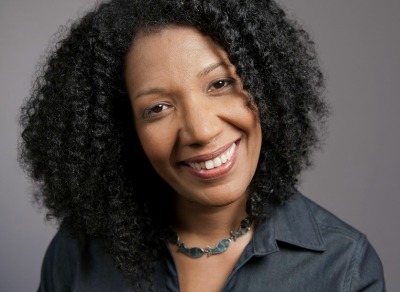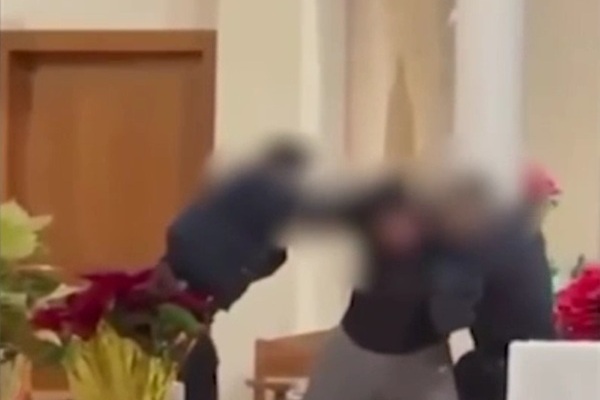From Forgiveness to Repentance to Restitution

Lungi kept her eyes on the left side of the road as she leaned her head back and explained to Rebekah Gaynore, who sat in the back seat of the Lungi's sturdy family car, the route she would take to give me a tour of Cape Town.
"She'll be able to see it," Lungi explained.
"See what?" I asked.
"You'll see," Rebekah Gaynore said.
I did see it.
"That was District 6," Rebekah Gaynore explained.
This rolling brown field on the side of the highway was once a thriving mixed-race community, a place where families had lived for generations since their ancestors — brought to South Africa as slaves from homelands in India, Indonesia, and Southeast Asia — were set free. By the 1960s, native African Xhosa and Khoi people and white South Africans lived among them. Then in 1966, Cape Town's apartheid government passed the Group Areas Act, which designated District 6 a white district. Apartheid police went house to house. They pulled families designated "colored," "black," and Indian out of their homes and forcibly removed them.
"Where did they take them," I asked?
"To the townships," Rebekah Gaynore explained, "where I grew up."
I told them I wanted to go to the townships. They understood, but insisted: "First, you must see the land that the white people took from us and claimed for themselves."
Lungi stopped the car on the side of the road. We got out, crossed the road and stood at a lookout point at the base of Table Mountain, an iconic Cape Town landmark.
"This is Camps Bay," Lungi said. "White people live here."
Wherever I looked I saw opulence — green trees burst with life, native fauna, opulent homes lined the hillside, which overlooked the bay.
We hopped back in the car and drove through the opulence. I was most struck by the ornately decorated security gates and razor wire strung around the perimeter of each home. These were not gated communities. They were gated homes.
My guides explained: "Cape Town is the most inequitable city in the world. Crime is a real problem here. People are afraid of burglary."
We drove through the winding hillside homes that apartheid built, through the center of the city, and out past the airport. The terrain changed. The hills were far away now. The ground was brown — even the grass. There were few trees. Then homes appeared.
"See it?" Rebekah Gaynore asked.
I looked out my window and there it was — a colored township. Homes lined the highway — no privacy, no trees, no grass, only cement. This was my first glimpse of poverty in South Africa — and it was by design. There was no "separate and equal" about it. It was just separate — period.
We drove a little further past another long stretch of brown nothingness. Then we were there.
"This is the black township," Lungi said.
The black township stood feet from the highway. Still no trees, no grass, but also no cement, and no actual homes.
We drove through the dense township strewn together with scraps of sheet metal. Lungi explained that the African National Congress recently made "progress" that people were celebrating in the black townships. Porta Potties were installed. Township residents have no running water or toilets, so Porta Potties are considered a blessing. Now they line the roads and outer edges of the townships.
This is all by design. When the Europeans first claimed Cape Town as their own, they took prosperous black indigenous tribes that had stewarded the land for tens of thousands of years and forcibly removed them to reservations. Under apartheid they revoked the black people's citizenship and called the reservations "townships."
Today we call this ethnic cleansing.
We wound our way through the densely packed black township where the smell of feces rises from bare earth and ditches carve their way across roads daring cars to enter.
It occurred to me: South Africa is no longer under legal apartheid, but apartheid still thrives here — through de facto economic segregation. There are no signs that say "whites only" as they did under apartheid, but there has also been no move by the black government to restore the people to the land that was taken from them.
One question haunted me: How does a white Christian South African live in this apartheid from day to day? 1) One must actively fight injustice, or 2) she must embrace a theology that has nothing to do with it.
Flash forward two days.
I'm on Robben Island, living and sleeping in the minimum security prison with a group of 60 other faith leaders from around the world. We are there to learn from Mandela and assess the state of people of color around the world.
I am standing overlooking the limestone quarry where Mandela bore the lashes of unforgiving African sun every day of the 18 years he languished here. White rock captures the sun and bounces it back into my eyes just as it did to the imprisoned as they pounded and cut rocks used to build and build up the very walls that imprisoned them.
Standing on the edge of the quarry I saw it: Apartheid was about systematic dehumanization — from the creation of the townships, to the declaration of "whites only" areas, to the quarry, to the prison cell where Mandela slept on a mat on the cold cement floor for 18 years — it was all about dehumanization. When Mandela, and Biko, and Robert Subukwe pushed for black freedom they weren't just resisting apartheid. They were resisting dehumanization.
That is why the students in Sharpsville had to burn their passbooks. That is why the people had to march — to claim their right to take up space in the world. That is why the anti-apartheid struggle continued inside and outside prison walls for 40 years. And that is why Mandela called the people to forgive their oppressors. Forgiveness was an act of resistance: Only a human can forgive.
White South Africans took in the message of forgiveness as if it was offered for their sake. They said "Thank you, Mandela" and went on their merry way back into their gated homes and ate scones in cafes on the bay. But forgiveness was not for their sake. It was offered in a period of transition for the sake of the black and "colored" South Africans whose rage could have overtaken them and kept them tied forever to their oppressors. Forgiveness cut the ties.
If forgiveness was a message offered for the sake of the black people, then what is the message for white South Africans? Repentance.
Later that day, I walked back from Mandela's cell with Nkosi, a young man who currently lives in a black township in Cape Town. I shared with him my private revelation about resistance, forgiveness, and repentance. I asked him: "What would repentance look like for the white people?"
Without hesitation Nkosi said: "Restitution."
I am haunted by South Africa. The nation stands 22 years from the year it was decolonized and apartheid lives on because there has been no repentance. There has been no restitution.
In the U.S., we stand 50 years from the Civil Rights Act and Voting Rights Act, which arguably ended the legal colonization of black people within our borders. But we still have Baltimore and South LA and South Philly, and the south and west sides of Chicago, and voting rights are still being dismantled and black men, women, and children are still dying at the hands of police authorities. And we still have actual reservations where the indigenous people of our land still languish without running water.
How do we build a future where the dream of the beloved community has a chance? There is no future without repentance.





















